
With its interesting and dynamic experiments, engaging lessons, personal lab journaling, and literature-based spine, Noeo Science gives homeschools a thorough, easy to use and flexible curriculum that will get kids excited about science and the world around them.
What We Like
But watch out for…
What Is Noeo Science
Founded by Dr. Randy Pritchard, Noeo Science is a literature-based homeschool science curriculum designed for homeschooling families.
The program uses a mixture of engaging literature, hands-on experiments and elements taken from Charlotte Mason and Classical methods to offer comprehensive and engaging instruction in biology, chemistry, physics and more.
What Grades Is The Curriculum Intended For?
Noeo Science is an Elementary and Middle School homeschool science program and is largely aimed at students in grades 1-8.
The curriculum centers around three main subjects (Biology, Chemistry and Physics), which themselves are divided into three levels, following the Classical Trivium – Grammar, Logic, and Rhetoric.
For those unfamiliar with the Classical method of homeschooling and its division of the stages of learning:
The Grammar stage of learning science is when a student is just starting to learn the very essentials of a subject and is most adept at memorizing facts and vocabulary.
At the Logic stage they begin to think more independently and critically and start to organize and analyze information to form arguments.
By the Rhetoric stage, students have developed enough of an understanding of the facts and have organized them/analyzed them to the point where they begin to be able to effectively communicate and express their own arguments coherently and apply their skills and knowledge to dealing with new problems.
With Noeo Science, the curriculum is divided in the following manner:
| Subjects | Intended Grade Level | Intended Stage of Learning |
| Biology/Chemistry/Physics I | Grades 1-3 | Early Grammar |
| Biology/Chemistry/Physics II | Grades 4-6 | Late Grammar, Early Logic |
| Chemistry/Physics III | Grades 7+8 | Late Logic, Early Rhetoric |
As might be expected of a classical division of study, the program progressively explores these subjects in greater complexity and challenge, as befitting the students’ own cognitive development.
For example, in Physics I students may work on building their own glossary of terms and learning key facts under the guidance of a parent, while by the end of Physics III they may be learning more independently and answering questions, hypothesizing and even comparing and contrasting scientific theories, such as in the example below.

One thing to note is that, at time of writing, Noeo Science does not include a Middle School biology option (i.e. Biology III for grades 7+8), although the company states that there are plans to introduce the subject at a future date.
Noeo Science, Homeschooling and the Individual Student
Although the classical model that is used by Noeo Science roughly correlates to certain grade levels, it is ultimately designed to be used as a homeschool science program.
Consequently, it can be used by students progressing outside a typical grade level, and because each course is more or less self-contained and the program does not follow any particular subject order, parents can start with whichever subject (Biology, Chemistry or Physics) or level they prefer or require.
One thing that parents need to keep in mind, however, is the fact that Noeo is a literature-based science program and uses living books that are somewhat geared to a particular reading level.
As a result, students who are reading significantly above or below grade level may find the included living books to be a little out of sync with their science needs.
For example, very precocious but experienced readers may find the Grammar level living books a little too easy and not particularly enjoyable to read but find the science concepts at the Logic and Rhetoric stages still a bit too advanced, while students who are reading-delayed may find the reverse to be true.
That said, the books selected are very age and grade appropriate and should serve most students well in our opinion, and Noeo Science is pretty open and transparent about the books it offers at each level (they are openly listed on the website), so parents can easily make a decision based on their students’ needs.
What’s Included In The Noeo Science Curriculum?
As with other homeschool science curricula, Noeo Science has a few components to it that parents will have to buy.
In general, each course requires an Instructor’s Guide, an experiment guide, a student lab manual, and various books as part of a literature-based component.
Being a hands-on homeschool science curriculum there are, of course, experiments and parents will also need to either stock up on various supplies outlined in instructor’s guides or purchase one of the company’s experiment kits, which contain most of the experiment materials required for the course.
Instructor’s Guides
The Noeo Instructor’s Guides contain all the information parents need to help guide students through their learning.
The books are softcover, spiral bound and printed in black and white. They contain lesson plans for each week, schedules of readings and experiments, directions for various activities, sample lab reports, answers to the various questions posed to students in their lab manual and even copies of pages from the student lab manuals, which can be handy for parents teaching multiple children at once.
Being black and white, the Instructor’s Guides aren’t the most visually striking to look at, but they are straightforward to use, and well-organized.
Overall, we feel they do a good job at centralizing and coordinating the different parts of Noeo’s program, which in turn should help parents stay on top of the learning.
Experiment guides
As it involves quite a few experiments throughout each course, in addition to the Instructor’s Guide, Noeo also includes helpful experiment guides.
These black and white guides are specific to each course and are designed to help guide parents and students through that course’s activities and experiments.
As such, they contain questions to start students off using the scientific method and step-by-step instructions on how to set up and conduct various home science experiments.
In general, the experiment guides are fairly comprehensive, providing a materials list and pretty detailed instructions.
We also like the fact that the experiment guides are illustrated, which can be very helpful for both younger students and parents who aren’t very handy.
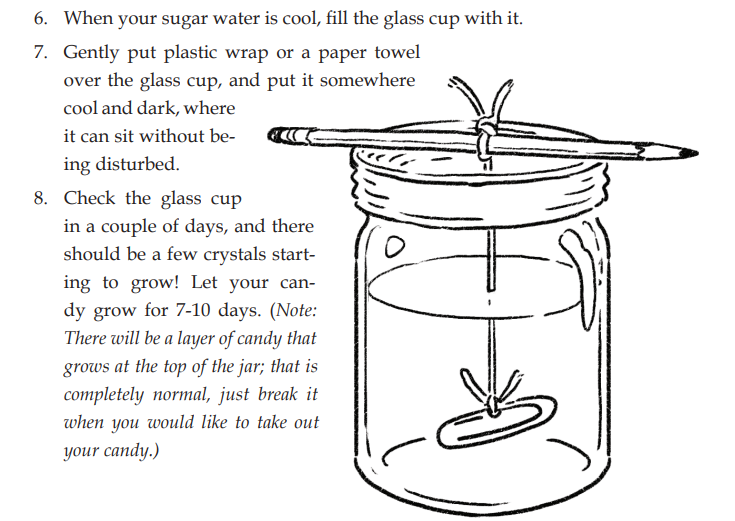
Student lab manuals
The student lab manual is where students do most of their written work and journaling for each subject and course.
These contain an assortment of pages where students record their observations, learnings and findings throughout the course. Depending on the course and level, students may draw, create a glossary of scientific definitions, record their methodology and data, answer specific questions about science topics and from their readings, and more.
Literature and reference guides
Although we’ll discuss this more in the section below, rather than teaching from a textbook, the main learning for Noeo Science comes from an assortment of reference guides and science-oriented living books that offer a more visually stimulating and engaging science experience for kids.
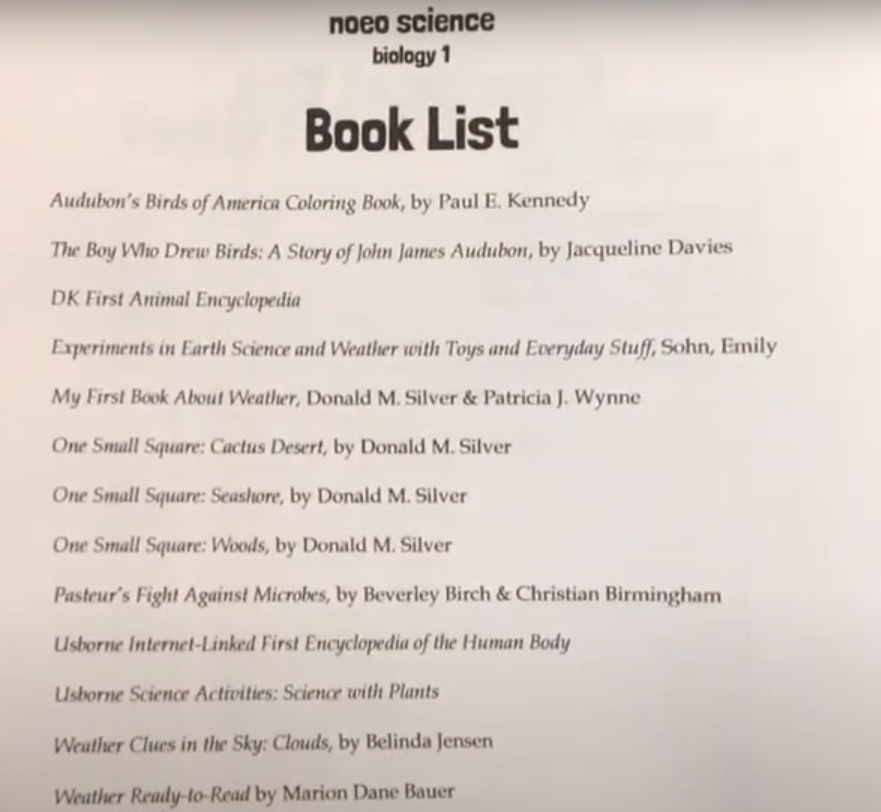
Experiment kits
By and large, the experiments in Noeo are largely done with inexpensive household goods, but, being a science curriculum, from time to time they require some components that not every family has or knows where to find.
To help out, Noeo Science also offers experiment kits for its courses.
These kits are geared towards the activities and experiments for each course and level, and largely contain some of the more hard to find or expensive items that might be required and are designed to make things a little easier for parents.
For example, a biology experiment kit might contain a small microscope set, some dissectable owl pellets, a terrarium, slide preparation materials, and so on, while a physics kit might have various building components, motors, gears and even Snap Circuits, which is kind of interesting.
Although not strictly required per se, a family can in theory read the materials list for each course and do a little shopping on Amazon, Noeo experiment kits are pretty well put together and do make things a lot more convenient for parents.
One thing that parents should be aware of is that these kits are not all inclusive.
Mainly containing larger, more expensive or harder to find items, parents will frequently still need to provide materials for certain experiments, such as sugar, thumbtacks, paper clips, bottles and so on, so parents might still have to go shopping from time to time for supplies.
How does Noeo Science Approach Teaching Science?
A Mixed Approach
In terms of its educational framework, Noeo Science uses something of a blended approach, mixing elements of Unit study with Classical and Charlotte Mason homeschooling.
Structurally, at least, the program borrows from unit studies, where each year’s curriculum is broken down into individual units containing several weeks of lessons that are thematically linked.
A unit in energy in Physics II, for example, might include a week learning about how things move and change, a week on the uses of energy, a week exploring the concepts of heat and radioactivity, and a week touching on nuclear power and forces.
In terms of teaching, however, Noeo is influenced by both classical educational methods and Charlotte Mason.
As discussed above, it divides its overall curriculum into the Classical Trivium, rather than specific grades, progressing from students being taught fundamental science facts and vocabulary to being able to explain, compare and discuss basic scientific theories, ideas and discoveries more independently.
In younger grades, as might be expected with a Classical approach to science education, students are expected to work on learning and developing a familiarity with scientific vocabulary by creating their own glossaries and researching various definitions.
Also in the Classical style, and much like Classical science programs such as Elemental Science, learning science in Noeo Science involves frequent, hands-on experiments where students learn to apply the scientific method and begin to report on what they’ve observed in a more structured manner.
In terms of Charlotte Mason influence, Noeo incorporates the use of various, grade-leveled living books rather than a typical science textbooks, which are typically a lot more engaging for students than a dry text, which in turn can help them develop a greater appreciation of science from a younger age.
Similarly, and unlike many traditional science programs, there isn’t much in the way of memory work or tests with Noeo.
Instead, and something that is a feature in both Charlotte Mason and Classic homeschooling styles, the program makes more use of journaling or notebooking to help student retention.
In their student lab manuals, and depending on the level at which they’re studying, as they learn students may draw, record any new vocabulary, make notes about what they’re learning, record their observations and data from experiments, answer various questions, and more.
Overall, Noeo Science’s blended approach is quite interesting, borrowing many effective features from different homeschooling approaches from science education and creating a sort of unique eclectic method that homeschool parents will likely enjoy.
While learning key science facts, the scientific method and some organized and practical lab experience, students can still avoid the dry textbooks, rote memorization and frequent assessments that tend to suck the life and joy out of scientific learning with kids.
On the other hand, this hybrid approach of mixing elements from different educational approaches may not suit homeschool purists, i.e. those whose homeschool style follows one approach as closely as possible.
Charlotte Mason purists may prefer a program that more directly incorporates nature study with less formal experimentation, for example, while stricter adherents to a classical education may prefer more emphasis on direct memory work and longer writing exercises.
Faith Neutral
Given that this is a science curriculum, something that’s worth a mention is Noeo Science and its religious perspective.
The company and its founder are Christian and see science and scientific discovery as a way of recognizing and appreciating God in creation, and each book’s introduction makes their outlook and belief pretty clear.

However, outside of this introduction the program is actually quite neutral. There are actually no references to scripture or the Bible and the books it uses are similarly neutral.
Rather interestingly, Noeo does actually contain lessons on evolution and the geologic age of Earth.
Unlike some other neutral science curricula that tend to skip these potentially contentious topics, Noeo treats them more as an opportunity for parents to discuss the matter in the context of their own beliefs and values.
Those who wish to can teach these topics as straight lessons, while others can discuss them alongside competing or preferred theories.
The fact that Noeo Science provides science information while still leaving enough room for parents to configure it to their own beliefs and values is actually quite refreshing in our opinion and makes the curriculum a little more broadly usable.
We feel most faith-based and secular homeschools (or at least, those who appreciate Noeo’s teaching style) should be able to make use of it without issue.
That said, those looking for a strictly secular curriculum, i.e. with no mention of religion whatsoever, or those looking for one that follows a more strictly young-earth/creationist model may want to look elsewhere.
Literature-based science learning
As mentioned above, Noeo Science eschews typical textbooks and learning materials in favor of more engaging and high-interest books and reference guides.
Which books a course includes depends largely on its subject and the learning stage for which it is intended (as well as any updates to the curriculum), but in general the books chosen by the program are very reputable, are often quite visually appealing and in general are a lot more fun to use and learn from than a standard science textbook.
Courses at the Grammar Stages (Chemistry I, Biology I, Physics I) tend to involve more highly illustrated, narrative and child-friendly/easier to read science books.
In Chemistry I, for example, parents might find titles such as What’s Smaller than a Pygmy Shrew, A Drop of Water, or Mad Margaret Experiments with the Scientific Method.
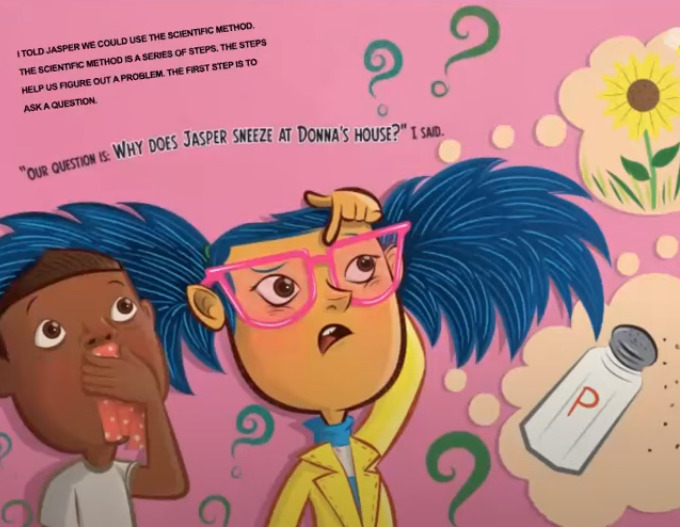
As the courses progress in complexity, the program shifts to scientific reference guide selections. Although still often visual and appealing to read, they tend to introduce the material in greater complexity and in a way suitable for older readers.
For example, Chemistry II might have students reading selected pages from homeschool favorites such as The Usborne Science Encyclopedia or the nicely illustrated and kind of cool Chemistry for Curious Kids: An Illustrated Introduction to Atoms, Elements, Chemical Reactions, and More.
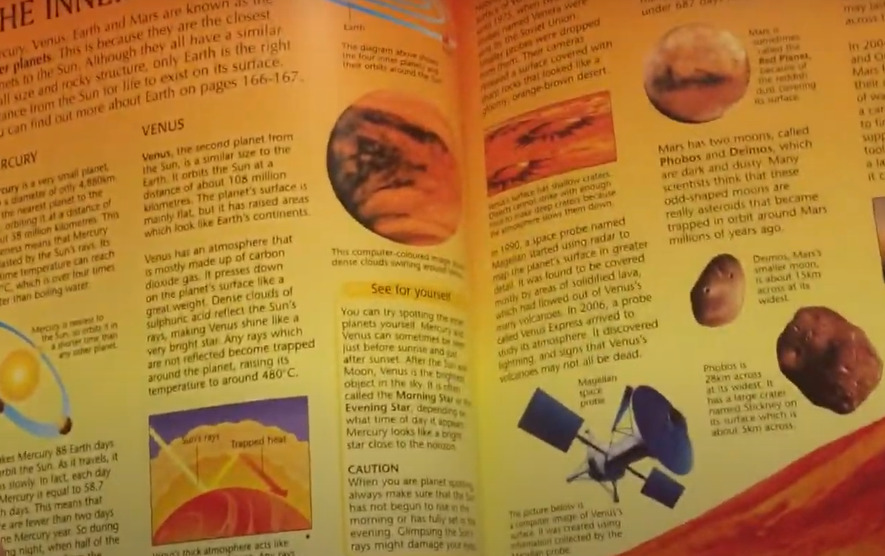
Chemistry III, taking things into a little more depth and complexity, can have students reading selections from titles such as the photograph-rich Molecules: The Elements and the Architecture of Everything and DK Eyewitness Chemistry.
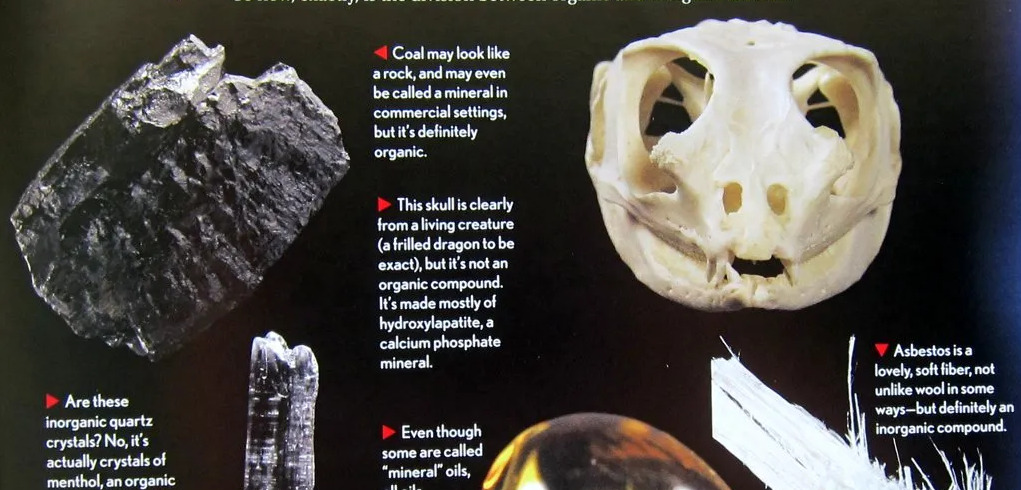
Overall, the books chosen by Noeo are quite informative and fun to read, and together they do introduce a strong literature-based learning element to the Noeo science program that many parents will enjoy.
Similarly, since each level of Noeo is designed to be usable by several grades (Biology I being usable by students in grades 1-3, for example), we feel that the company has done a pretty good job overall at selecting age and grade appropriate titles for each course.
For example, Chemistry I is intended for grades 1-3 and selections such as What’s Smaller than a Pygmy Shrew, Marie Curie by Elizabeth MacLeod, and Many Kinds of Matter: A Look at Solids, Liquids, and Gasses are all more or less intended for kids ages 6-9.
One thing we would have liked to see in this curriculum, however, is the inclusion of some differentiated learning options at each level.
In other words, the books that are used for each level are geared to an average reading ability (and interest) for that age range. As such, there are really no real optional choices for parents of highly precocious students seeking enriched learning or those of reading-delayed students seeking easier books to use with the course.
Hands-on experimentation
Noeo Science is a big believer in hands-on science education through observation and experimentation.
In addition to having kids read about science and scientific discoveries, each level of the program includes a wide variety of fun, hands-on experiments that allow students to see scientific principles in action and gets them actively involved in their own learning.
More than that, these experiments allow students an opportunity to repeatedly and formally use the scientific method to explore different questions and test different hypotheses, rather than just memorizing it as a series of steps or making use of it in a more abstracted way.
At any given time in Noeo, students may create a match-powered boat, examine various items under a microscope, experiment with acids, make a small tornado, create smoke rings, construct a windmill and so on.
While the experiments aren’t perhaps the most advanced we’ve ever seen (student’s probably won’t, for example, build their own laser array), they often are a lot of fun to watch and do, and aren’t particularly difficult, expensive or time consuming too for parents (and later students) to set up.
This is particularly important since there are quite a few experiments listed in the curriculum – depending on the homeschool’s particular schedule, there can be an activity or experiment every other week.
Integrating Other Science Subjects
Noeo is a little more unique in how it handles science subjects outside the core of biology, chemistry and physics.
While the core of the program is made up of those subjects, from time to time Noeo explores and provides lessons in topics such as astronomy, earth science, geology and more.
Rather than creating smaller courses or ignoring them altogether as some other programs might, Noeo weaves these topics into the core subjects, fitting lessons or even entire units to where they are most appropriate and naturally linked.
For example, Biology I has an entire unit on weather and the atmosphere (earth science), due to the effect of climate on life and biological systems. Similarly, Chemistry II has a unit on Geology, logical due to the close relationship between the two branches and the impact chemical processes have on geological formations, while Physics I, quite naturally, has a unit on Space (Astronomy).
As a result, while there may not be as broad subject choice as some other programs, such as Sassafras or REAL Science Odyssey for example, students can get a better and more natural understanding of how and why different branches of science fit together as they do in the real world.
How It Works
Noeo is pretty straightforward as far as science curricula go.
Each course covers 36 weeks of science instruction, and the Instructor’s Guides helpfully offer options for 2 and 4 day schedules, depending on how intensive a homeschool wishes its science lessons to be.
Students typically begin their lessons with a reading assignment.

Parents of younger students can do these as read alouds, while older students can obviously do the readings independently.
Afterwards, students do some notebooking in their student manuals.
Depending on the level, this can include looking up and writing down certain scientific terms, drawing pictures of what they’re learning, making a list of concepts they’ve learned, answering some short specific questions about their readings, answering certain questions from the reference guides and so on.
After this work is complete, parents can use the Instructor’s Guides to make sure that the student responses are correct and that the work has been completed.
Every other week or so, there is an experiment or activity.
Parents and students use the course’s experiment guide (and sometimes an experiment kit) to set everything up.
With experiments, students will be presented with a question in the experiment guide that will typically be answered through hands-on experimentation and the scientific method.
As they work, or shortly thereafter, students jot down their method, thoughts, observations and learning in their lab manual, as well as answering some questions about the general science behind what they’ve just done.
In general, not accounting for experiment days, lessons in Noeo Science are pretty short. Lessons for students in grades 1-3 on a 4 day a week schedule typically take around 20 minutes or so, while those at higher levels take around 40 minutes to go through.
As a result, the lessons aren’t particularly too demanding in terms of student attention span or parental time.
The lessons themselves are pretty straightforward, following a common and consistent pattern that’s easy for students to settle into and get used to.
They are also pretty flexible.
Parents can easily condense or spread out the program’s schedule and they are generally free to add or remove activities or learning components, or just shift things around as much as they’d like.
In fact, many of the experiment kits come with manuals containing ideas for dozens of optional activities and experiments that parents can add (or replace) to the curriculum.
One thing parents should be aware of is that there isn’t quite as much extensive writing or math exercises in Noeo as there might be in some other curricula out there, so students won’t really be doing as much report writing or number crunching with this curriculum as some parents of gifted students may prefer.
That said, we believe Noeo provides an excellent overall science education that should suit most students and their parents just fine (most levels are NGSS aligned, after all), and it should help kids develop a stronger interest in scientific study and the world around them.
How Easy Is Noeo Science To Teach?
We believe Noeo Science is actually quite easy to teach, even for parents who are a little rusty on science themselves.
Although there are a few guides and books to keep track of, the programs lesson plans and Instructor Guides keep things pretty well-organized, and guide parents and students quite nicely through each lesson.
Similarly, the experiment guides are quite well-written and detailed, clearly outlining how to set up and conduct each activity and should be easily used by older students if they wish to take the lead on their own lab work a little bit more.
Overall, we think Noeo Science is a pretty open and go science curriculum. Its guidance and explanations are clear enough for both parents and students to use to go through lessons without any real prep time.
Pros And Cons
Pros
Easy to teach
With its well-organized Instructor’s Guides and clearly detailed experiment guides, Noeo is a very easy to teach, open and go science program that requires very little prep work or experience in teaching on the part of parents.
Thorough science curriculum
Noeo Science does an excellent job at teaching science, providing students with a strong understanding of essential biology, chemistry and physics, diving into these topics in some depth and touching on additional subjects such as earth science, astronomy and more.
Further, the program encourages students to independently learn and explore science and gets them used to the scientific method fairly early on.
Literature-based approach
Noeo uses a variety of engaging and high interest books to help teach science, including quite a few living books, which can be a lot nicer and more enjoyable to read than a standard textbook.
Experiments are fun and interesting
Although they are designed to use common household materials, experiments in Noeo Science can be a lot of fun. Depending on the course and level, students might make a vortex tornado, a cloud, a matchbox boat, examine a wet slide, build some Snap Circuits and a whole lot more.
Flexible Curriculum
Noeo is quite a flexible science curriculum and parents are generally free to do as little or as much as they prefer, depending on their homeschooling style and student needs.
Additionally, because it is a neutral curriculum that includes topics such as evolution, geologic ages and so on, it can be used by secular and religious homeschools alike.
Lessons are kept short and to the point
Lessons in Noeo generally take under 40 minutes or so based on a 4 day a week schedule, even at the upper levels, not including research and experiment time.
As a result, students are more likely to stay engaged throughout their lessons and won’t feel as overwhelmed or bored by their science studies.
Cons
Not exactly cheap
There are a few high quality components to Noeo Science and its price reflects this. At between $200-300 per course for a complete year’s kit, it’s not the cheapest homeschool science program out there.
While the program does sell its Instructor’s Guides and manuals separately, meaning parents can try and source the books and experiment materials on their own, the extensive book and experiment lists means this may not represent that much of a savings in the long run.
Experiments may require household supplies, even with kits
Although Noeo provides experiment kits that contain the hard to find or expensive items that might be required for an experiment, parents will still need to supply many common household goods, which can involve a few trips to the store.
Who Is Noeo Science Ideal For?
Parents looking for an engaging and thorough science curriculum
Noeo Science covers its subjects in a fair amount of depth, providing students with a solid foundation of scientific facts and knowledge, as well as a strong familiarity with scientific methodology, using fun activities and engaging living literature.
Students who enjoy notebooking
Rather than rely on formal assessment and memorization, with Noeo students write down or draw their observations, thoughts and findings through guided journaling in their student lab manuals.
Parents looking to integrate literature-based learning into science learning
Taking inspiration from a Charlotte Mason approach, each week Noeo uses a variety of living books and highly engaging reference guides to impart scientific facts and knowledge in a more fun and interesting way than traditional programs might.
Parents and students who are looking for a lot of hands-on science activities
Each level and course in Noeo Science is replete with a wide variety of different hands-on activities and experiments, meaning active students will have a lot more to do than just read from a textbook.
Faith-based homeschoolers looking to discuss controversial topics
Although produced by a Christian company, Noeo includes lessons in topics such as Evolution, reproduction and the geologic age of Earth, intending for faith-based homeschools to use these as a topic of discussion with their children and an opportunity to approach them using their own values and beliefs.
Who Is It Not Ideal For?
Busy homeschools looking for a self-study science program
While Noeo Science encourages independent learning as students get older, it still generally requires parental involvement in terms of overseeing learning, leading discussions, correcting student work and providing support and oversight when it comes to experiments.
Strictly secular or strictly faith-based homeschools
Noeo Science is something of a neutral science curriculum. While its introduction makes frequent references to God, its actual lessons do not and it does touch on concepts such as evolution, the age of the universe and so on.
That said, secular homeschools who would prefer a curriculum with no references to religion and those who would like to totally exclude controversial topics in science will probably not appreciate the curriculum as much as others and may want to look elsewhere.
Price
Note: Prices correct as of writing. All prices in USD.
As mentioned, there are several components to Noeo Science courses, including an instructor’s guide, lab manual, experiment guide, a book list and usually an experiment kit.
The Noeo website offers quite a few ways to purchase these, including being able to buy the course as a kit (usually between $200-300 depending on the course and level), as individual items or as different packages (an experiment kit + experiment guide, for example).
In general, and as of writing, individual items for each course and level tend to have the following prices:
Instructor’s guide – $29.95
Experiment guide – $15.95
Lab manual – $15.95
Experiment kits – $60.00
Interestingly, and unlike many other literature-based curricula, complete Noeo kits do include the books on their book lists, which makes things more convenient for parents.
It is important to note that Noeo does offer discounts and offers from time to time, so it is worthwhile to check their latest prices.
Parents can also check out Noeo Science at:
Is It Worth The Price
Although not the cheapest homeschool science curriculum out there, we feel that Noeo Science can offer parents and students a lot of value.
The program offers a complete and fairly in-depth study of Biology, Chemistry and Physics through thorough lesson plans, notebooking, hands-on activities and the use of fun, richly detailed and information-rich living books and reference guides.
In addition, the program contains a ton of interesting, high quality and often exciting experiments in science that will get kids using the scientific method to approach questions systematically and, perhaps more critically, get them more interested in science and the world around them.
Finally, Noeo is a well-organized and flexible curriculum that provides parents with enough control to adjust the learning to their own homeschooling style, needs and values.
Bottom Line
It’s one thing for kids to read about science, but learning it often means needing to get your hands dirty with some good old fashioned experimentation.
With its interesting and dynamic experiments, engaging lessons, personal lab journaling, and literature-based spine, Noeo Science gives homeschools a thorough, easy to use and flexible curriculum that will get kids excited about science and the world around them.

About the Author
David Belenky is a freelance writer, former science and math tutor and a tech enthusiast. When he’s not writing about educational tech, he likes to chill out with his family and dog at home.
